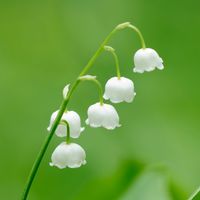Double Poppy Info: Learn About Growing Double Flowering Poppies


If you are a fan of peonies and can’t get enough or have difficulty growing them, then you may want to consider growing peony poppies (Papaver paeoniflorum), also known as double poppies. I know what you’re thinking…. poppies, aren’t they illegal? Don’t click off this article just yet; keep reading for additional double poppy info. Based on my understanding, while double poppy plants are a sub-type of the opium poppy (Papaver somniferum), they possess a much lower morphine content, making it perfectly legal to grow this particular variant in the garden-- provided your intention is to enjoy it strictly for its aesthetics. Read on to learn more about growing double-flowering poppies.
What is a Double Poppy?
As the name suggests, double poppy plants (USDA zone 3-8) are annual ornamental plants that resemble peonies with their large, tightly packed double flowers, 4 to 5 inches (10-13 cm.) in diameter, which form on long, 2 to 3 feet (61-91 cm.) tall sturdy stems laden with blue-green lettuce-like leaves. If you’re having trouble visualizing, the flowers sort of look like ruffly pompoms. This description isn’t far off base considering there actually is a variety of Papaver paeoniflorum known as “Lilac Pompom.” Here’s something to really cheer about: they come in a color palette similar to peonies as well, with offerings in shades of red, pink, purple, and white!
Double Poppy Care
I’m sure you’re curious about more specific double poppy info, such as double poppy care – what exactly does it entail? Well, growing double flowering poppies is quite easy it seems. In early spring (sometime from the end of April through May), loosen the soil in the planting area, then direct sow seeds into the soil, raking them in lightly. Be sure to keep the seeds moist until they germinate. Once seedlings emerge, thin them so they are 15 to 18 inches (38-46 cm.) apart. The location of your double poppy plants should be where the soil is well draining, with a soil pH of 6.5 to 7.0, and where the plants will receive full or partial sun. Prior to the onset of flowering, approximately six to eight weeks of growth, fertilize with a high phosphorus fertilizer. Each individual flower will last roughly three to eight days before the petals start dropping, at which point you will want to cut off the bloom. The regular practice of deadheading throughout the summer will encourage the formation of new buds and ensure longer-lasting blooms. To promote strong root growth, you will want to give the double poppy plants a deep soaking of water occasionally. Other than this occasional soaking, watering is really not a major consideration, as poppies do not need to be watered too often. Any seed pods that do form on the plant can be left to self-seed later or they can be cut off and harvested once they’ve dried on the plant for sowing in the garden next season.
Sign up for the Gardening Know How newsletter today and receive a free copy of our e-book "How to Grow Delicious Tomatoes".

Shelley Pierce was a writer for Gardening Know How, contributing to hundreds of articles for the site.